« Haflong, Hill-Station of Assam | Main | Dhaka, capital of Bangladesh »
May 03, 2005
Agartala, Capital of Tripura State
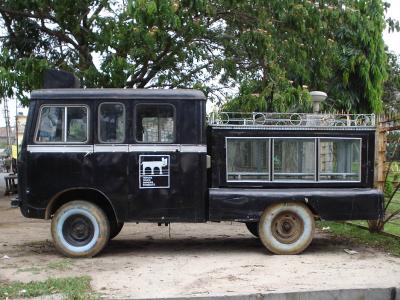
An Agartala Hearse
With all the mention of terrorists and soldiers in my last diary entry, I hope you don't think that this first photo is as a result, but I just couldn't resist grabbing a snap of the most unusual hearse I've seen for a while. Whether it is reserved for special occasions, or whether all hearses are like that here, I'm not sure, but it definitely deserves inclusion for its unique construction.
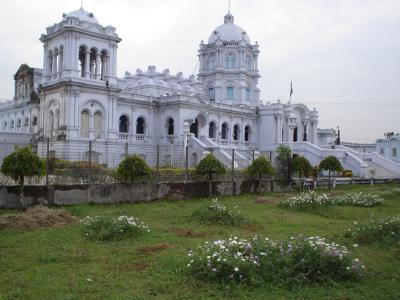
The Ujjayanta Palace
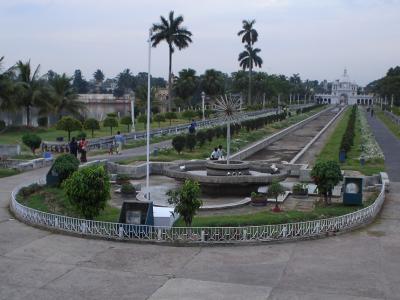
Ujjayanta Palace Gardens
The Ujjayanta Palace was built as a private residence for (I won't say 'by'!) Maharaja Radha Kishore Manikya in 1901, and stands amidst large, well kept gardens in the Mughal style. It is now used for the State Legislature, but opens to tourists each evening between 5 and 7pm; rather late for photos at this extreme east of the Indian timezone, hence the gloomy views above. The twilight is especially popular with courting couples, though, who sit at regular intervals on the walls around the empty fountains.
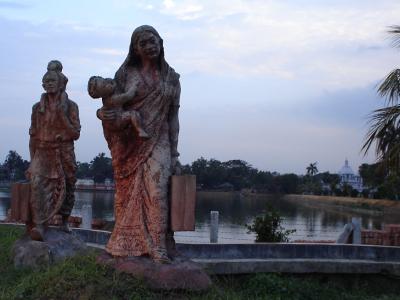
Statues in the Palace Grounds
This statue is one of a series in the Ujjayanta Palace grounds, bordering one of the lakes, and is life sized. Agartala has very few other scenic points of note, hence the lack of photos here. The state of Tripura is very small, and its capital, likewise, is no bigger than many Indian market towns; easy to walk around, difficult to get lost in its regular grid of streets. The locals, unused to tourists in their city, initially regarded me with some interest, but soon got used to seeing me walking around, and greeted me on the most friendly of terms.
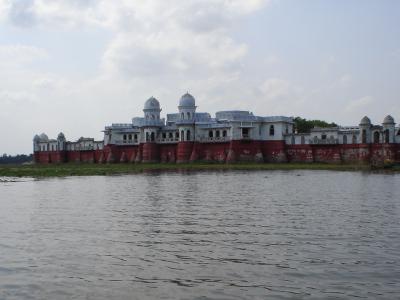
The Neermahal Palace
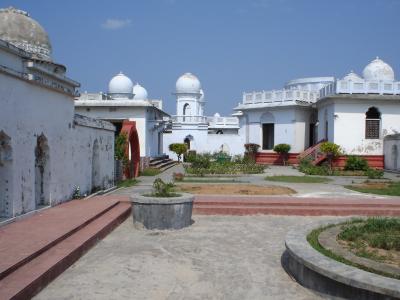
Inside the Neermahal
After a few days in Agartala, I headed south to visit the Neermahal Palace, situated on the shore of the huge Rudrasagar lake, near to the town of Melagarh. Built in the 1930s as a water-palace for the Maharaja, it is now empty, and badly in need of rennovation beyond the installation of colored floodlights presently in hand. It would make a wonderful study centre or hotel; now it is just a series of battered empty rooms visited by the public at 3rs per head.
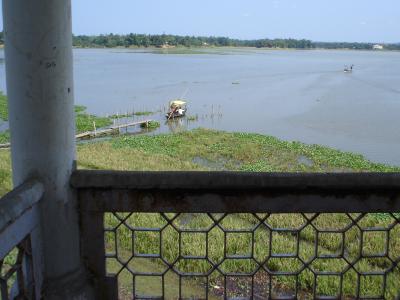
The Rudrasagar, and Sagarmahal
I stayed in the Sagarmahal Guest House, on the opposite shore of the lake: it can just be seen as a white dot to the top right of the photo above. The guest house, run by the Assam Tourist Board, provides lovely rooms with onsuite bathrooms and private balconies for just £2 per night. Mine had a lovely view of the lake and the palace, which was illuminated in the evening for the delight of tourists. In this case, though, it was 'tourist', in the singular: I was the only guest at the Sagamahal that night, and received excellent attention from the hotel and kitchen staff. They were only annoyed that I didn't eat more!
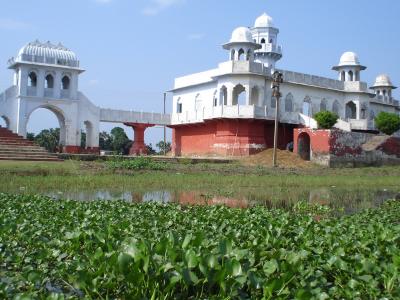
The Neermahal Palace

Rice Paddy-Fields
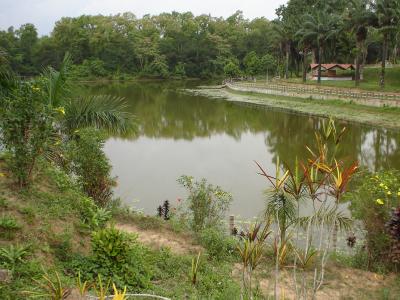
Sipahijala Lake
Sipahijala, on the road back to Agartala, is an extensive forest nature reserve, lakes and zoo. The site is very large: 4.5km from the entrance gate to the first item of interest for example, so it is difficult to explore without personal transport, though I was lucky to get lifts on a couple of passing vehicles. The zoo is quite well maintained, with large enclosures, though I still wonder just why its here and what good it, like many other zoos, are doing for the birds and animals captured for us to stare at. As always, I am tempted to open the cages and let the occupants out, but sadly, I lack the courage to do so.
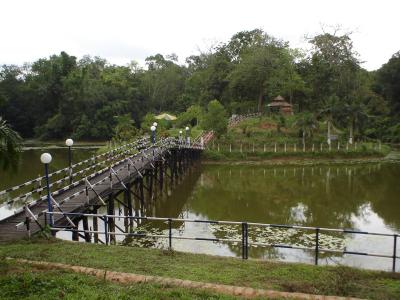

In case you have been wondering where rubber comes from, here are some rubber trees in a small plantation. The bark is cut with a grooving knife, and the latex sap runs into small cups, where it is collected and processed to produce natural rubber.
Posted by travellingtim at May 3, 2005 11:01 AM
